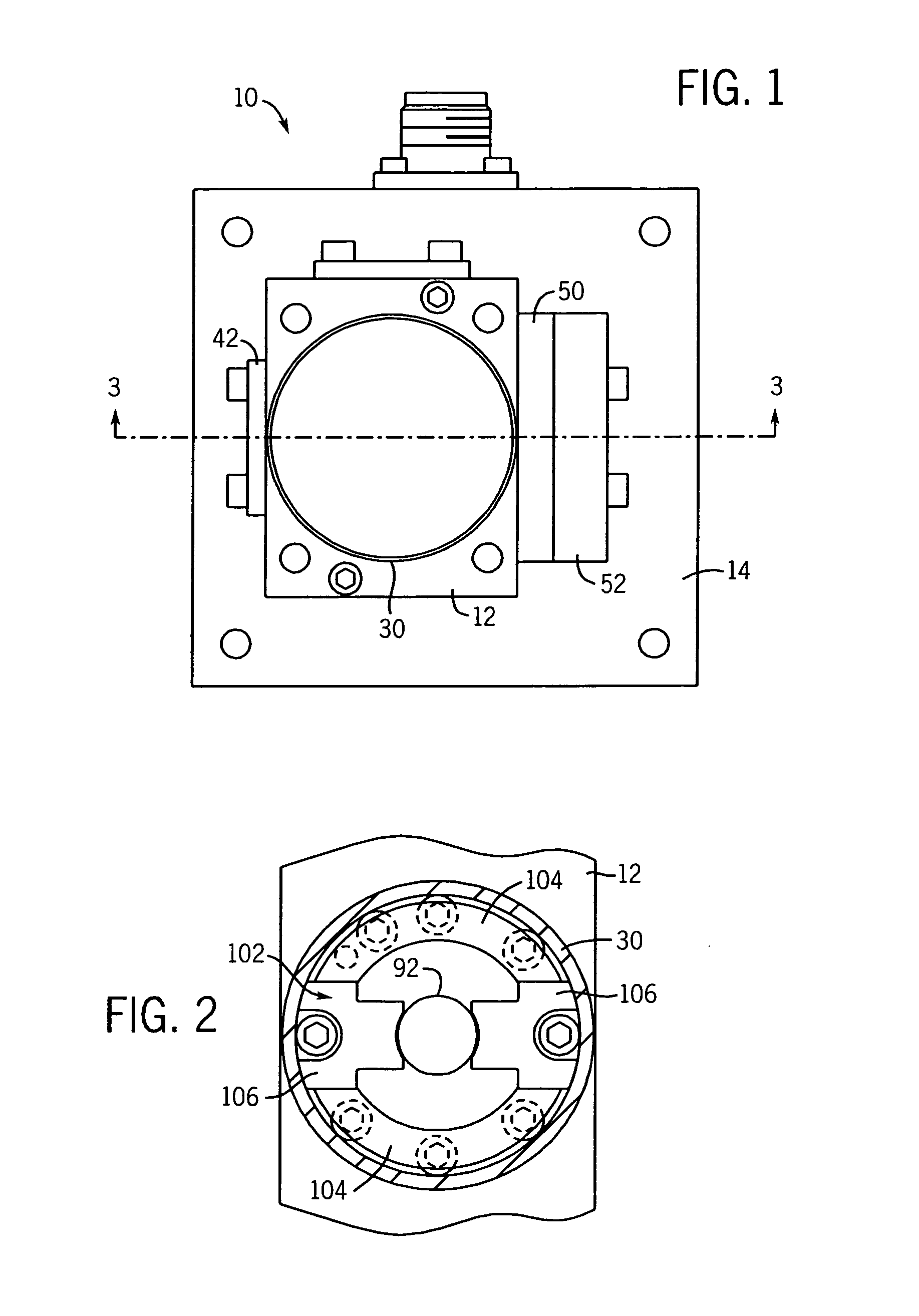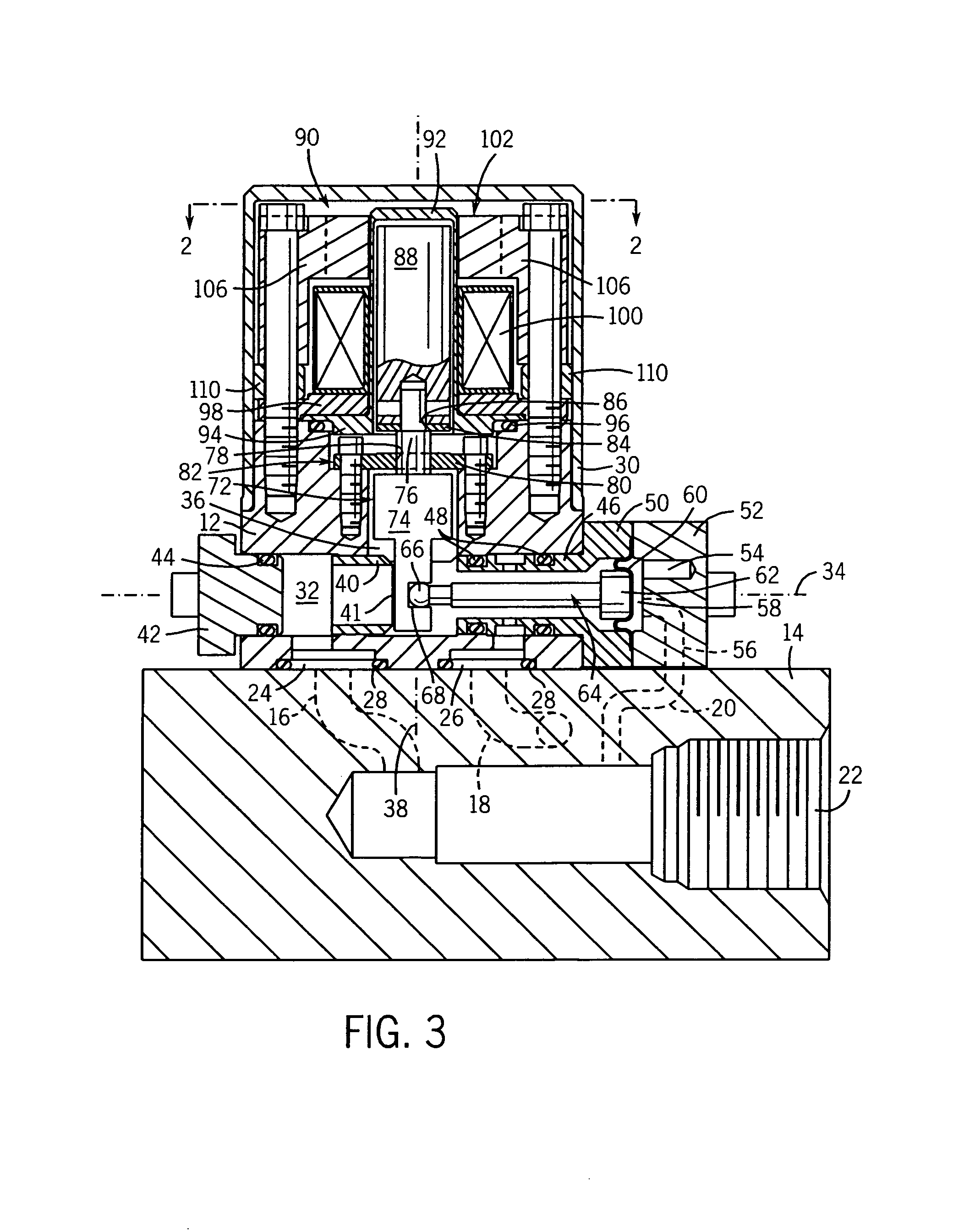Pattern factor control valve
a technology of pattern factor and control valve, which is applied in the direction of valve operating means/releasing devices, turbine/propulsion fuel valves, mechanical equipment, etc., can solve the problems of unstable burning, unstable burning, and unstable combustion, and achieve high accuracy and responsive fuel
- Summary
- Abstract
- Description
- Claims
- Application Information
AI Technical Summary
Benefits of technology
Problems solved by technology
Method used
Image
Examples
Embodiment Construction
[0035]The present invention provides a high flow volume and flow rate fuel metering valve having attributes designed to make it highly responsive to input drive signals, for example having low weight, pressure balanced actuating components with low damping, low drag and bluff body forces and low hysteresis, such that is suitable to operate in high rate gas turbine combustion control systems designed to stabilize the combustion process of the burners. Disclosed herein are two preferred embodiments of an active combustion control valve and a preferred embodiment of a pattern factor control valve according to the present invention. The first embodiment utilizes a flapper valve member that is pressure balanced by a rolling diaphragm piston. The second embodiment described uses an inherently balanced bridged clevis to simultaneously control metering through multiple metering orifices (four in the described valve). The pattern factor control valve described herein uses a similar clevis va...
PUM
 Login to View More
Login to View More Abstract
Description
Claims
Application Information
 Login to View More
Login to View More - R&D
- Intellectual Property
- Life Sciences
- Materials
- Tech Scout
- Unparalleled Data Quality
- Higher Quality Content
- 60% Fewer Hallucinations
Browse by: Latest US Patents, China's latest patents, Technical Efficacy Thesaurus, Application Domain, Technology Topic, Popular Technical Reports.
© 2025 PatSnap. All rights reserved.Legal|Privacy policy|Modern Slavery Act Transparency Statement|Sitemap|About US| Contact US: help@patsnap.com



